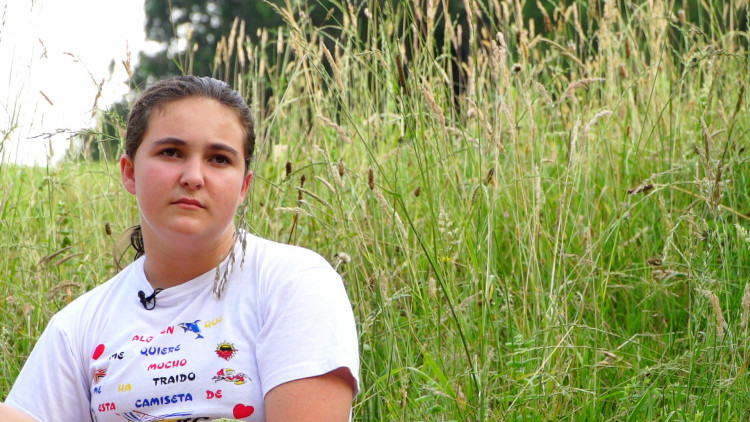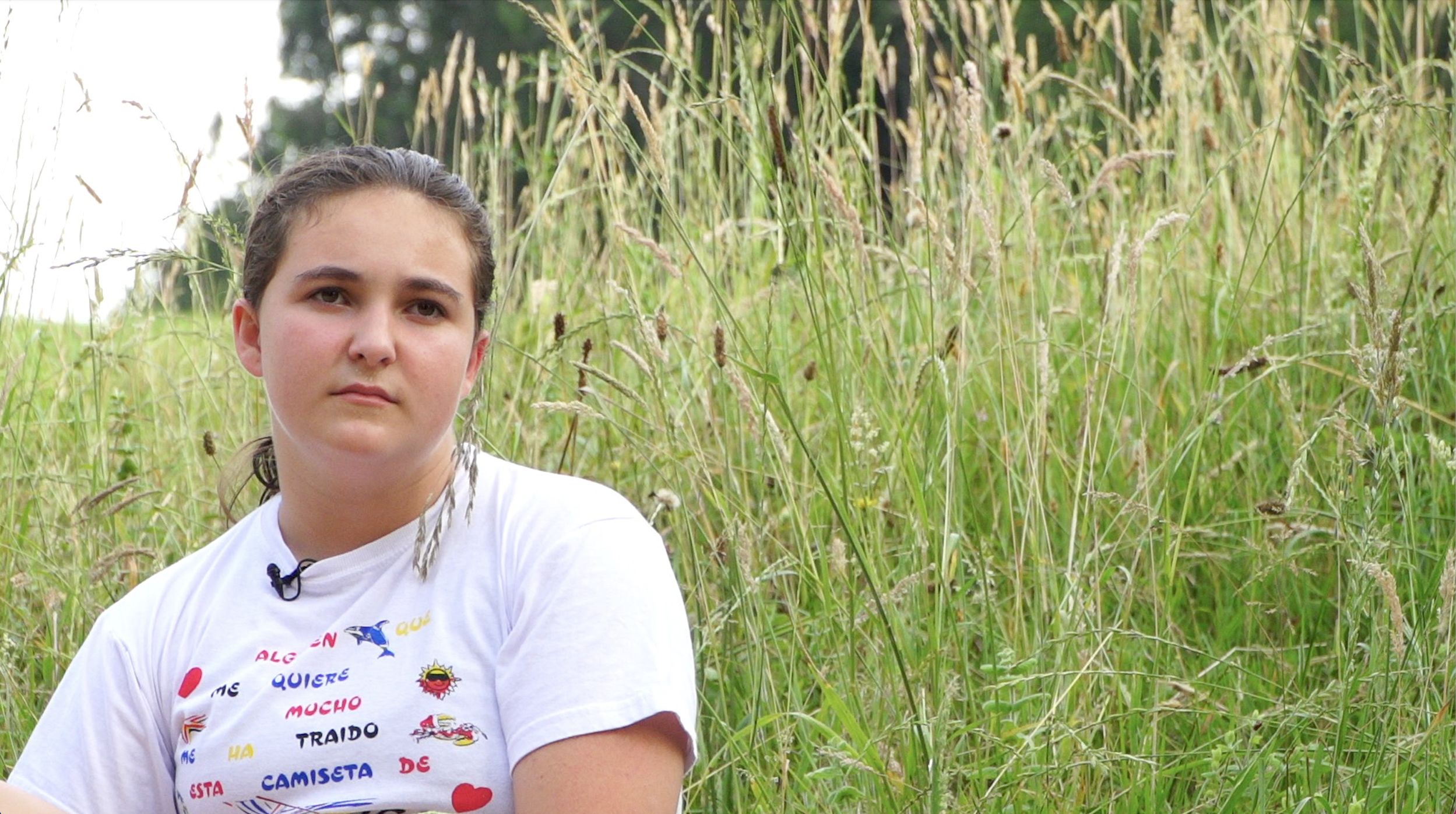“Restoring damaged springs and fountains is a way of caring for shared history and connections”

Citizen-commissioners interview.
Four citizen-commissioners of the new Concomitantes project starting up this year in Llanos (Cantabria) tell us about their personal experience in this participatory process that explores—through art—the relationship between the village and its water resources: the river and natural springs.

INTERVIEW 1:
C: Can you tell us your name and your relationship to the project?
Francisco: My name is Francisco, and I’ve lived here for 14 or 15 years. My connection to the village started when we used to come here to look after some horses we kept on a rented paddock. When the opportunity to buy the land came up, we built the house that we now live in. That’s how our story in the village began.
C: Why did you decide to get involved in the Concomitentes project?
F: It’s a project that can allow those of us who live here to get to know the village better, or in different ways. I think it’s an exciting initiative that can bring people together in a lasting union, if we make the effort to get the project off the ground.
C: How do you think the project has evolved since the first meetings in April?
F: The dynamics of the weekly meetings were very different each time, but what didn’t change was the fact that everyone wanted to contribute. Proof of this is the two strong ideas that were generated at the end of the process. Now we’ll have to see how the project itself will unfold.
C: Can you tell us about the vote for the artistic commission on 26 June?
F: The group initially came up with three proposals. Then another one was added, and in the end we settled on two. The first has to do with water—the river, the fountains, the washing places, and the natural surroundings—and the second is more social, which is something that the village has been calling for. Since the local bar closed a few years ago—the bar wasn’t just a place to go and have a drink, but somewhere to meet up and discuss day-to-day matters—we’ve been wanting to respond to this social need, to have a place in which to give talks, get together, play cards, or have a drink. In a way, Aguas Vivas is also a community project that takes this social aspect into account.

INTERVIEW 2:
C: Can you tell us your name and your relationship to the project?
Irene Rábago: My name is Irene Rábago. I'm 13 years old and I've lived here since I was two. I was born in Santander and I lived there for two years, but my grandmother talked us into moving here.
C: What do you like most about living in Llanos?
IR: Being in contact with nature gives me the freedom to roam around whenever I want.
C: What’s your relationship with nature? What’s a typical day in the village like?
IR: I often wander around the area near the bridge, around the viaduct fountain and some trails that are further up. Sometimes I go up to the cabin with the cows and the horses, or I go for a bike ride. Wherever I go, there are trees and fields everywhere.
C: You participated in the meetings from the beginning. What was the experience like?
IR: It’s pretty cool to meet every Wednesday. I’d like it to continue, because otherwise we only come together for the village fiestas.
C: How do you think the project can benefit the village, or benefit you?
IR: It’s an initiative that can benefit the whole village, in terms of the water, and also for the people who live here.
C: Tell us about your relationship with the river and why you think it’s important.
IR: Every summer, before we had a swimming pool, we’d always come down to the river to swim, and we also walk along the river bank, our dogs swim in it… A little while ago I brought my dog down to swim because it’s really hot this summer and we live nearby. We’ve built houses out of pallets by the river, we’ve done all sorts of things in the river. We’ve even fished with rods and nets, although if we catch something we always release it afterwards.
C: Do you think that a project like this commission can bring the village closer together?
IR: Even the process itself is beneficial, because it’s making the whole community gather and share their views.

INTERVIEW 3:
C: Can you tell us your name and your relationship to the project?
Marcial: I’m Marcial, and I’m a member of the working group. I lived in Llanos from the age of six until we moved to a neighbouring village, El Arenal, when I was fourteen. Then I got married and I lived abroad with my wife and children for thirty-three years, and then we came back to Llanos, where we’ve lived for the past sixteen years.
C: What’s it like to live in a village like this?
M: It’s a place where people help each other. We greet each other in the street and help each other out however we can.
C: What do you think of the Aguas Vivas commission?
M: I think it’s a good decision to work with the river. Hopefully we can restore at least two fountains that have always been there, and the river environment.

INTERVIEW 4:
C: Can you tell us your name and your relationship to the project?
María: My name is María and I’ve lived here for seven years. I moved here because it’s a small village that’s relatively close to some larger towns and to the city. And also because I knew people who lived here and I love the natural surroundings.
C: How did you find out about Concomitentes here? What do you think is good for the project?
M: I heard about it from some locals, who told me about meetings that were being held to organise something for the village. They mentioned some “mediators” in an abstract way. I thought it was interesting that very different residents were coming together to think about doing something communal for everyone. I was pleased to find out that many of us are missing the same thing: opportunities to meet, and to gather with people who we don’t interact with in our everyday lives.
C: Do you think the process we’re carrying out can provide a solution?
M: I hope a concrete solution will come out of the process. But I think it’s already bringing together people who didn’t have any shared spaces, and allowing us to talk about what we think the village needs. We might not find solutions for everything, but at least people are talking now. For me, the project’s potential is to be a gateway to creating a common space where we can talk about all of this.
C: What do you think about the process that’s starting now, to do with the river and its resources?
M: One of the words that came up during the meetings is “intergenerational”. In other words, we want it to be a space that can meet the needs and interests of people of different ages and lifestyles, or of people who have always lived in the village and others like me who arrived later. There’s a strong feeling in the village that “we don’t have anywhere to gather.” In this sense, water—and the idea of restoring damaged springs and fountains as a way of caring for shared history and emotional attachments—will bring the community together. What’s more, we’ve partly lost the use of these resources, and they have the potential to become a meeting place. There are strong ties to the natural springs and the river, and there’s a collective desire to take care of the area and to improve it.
